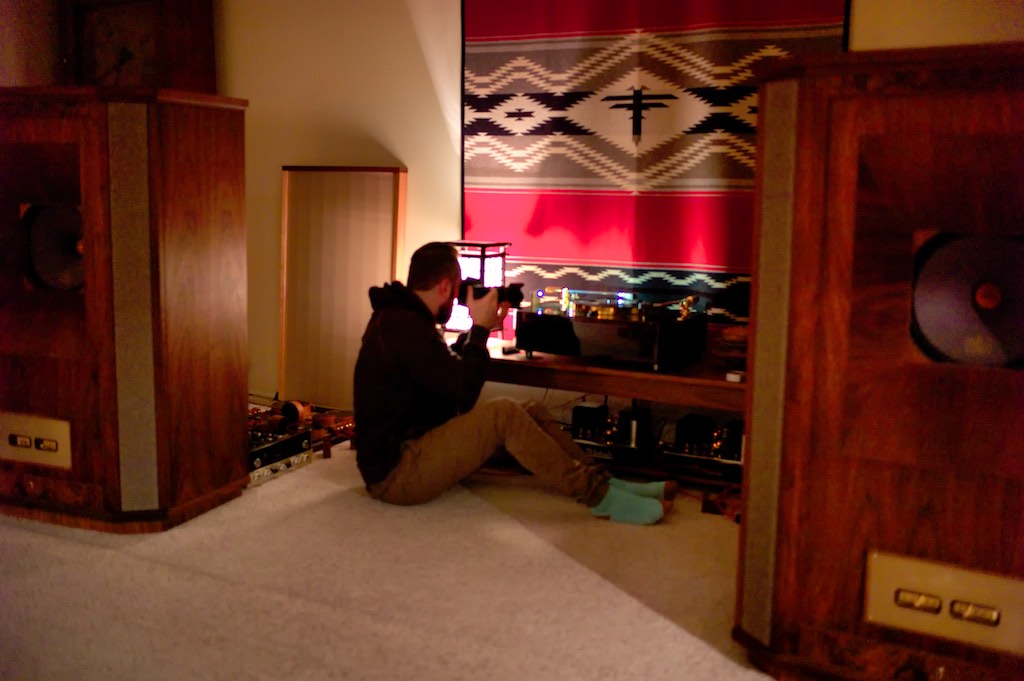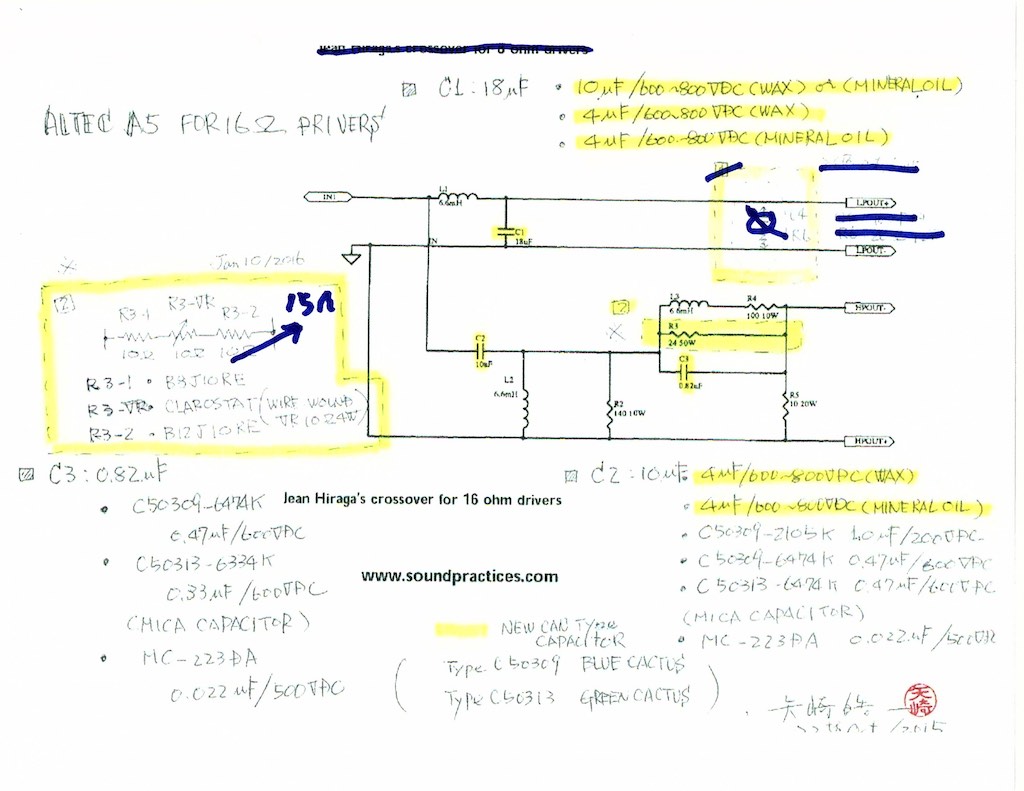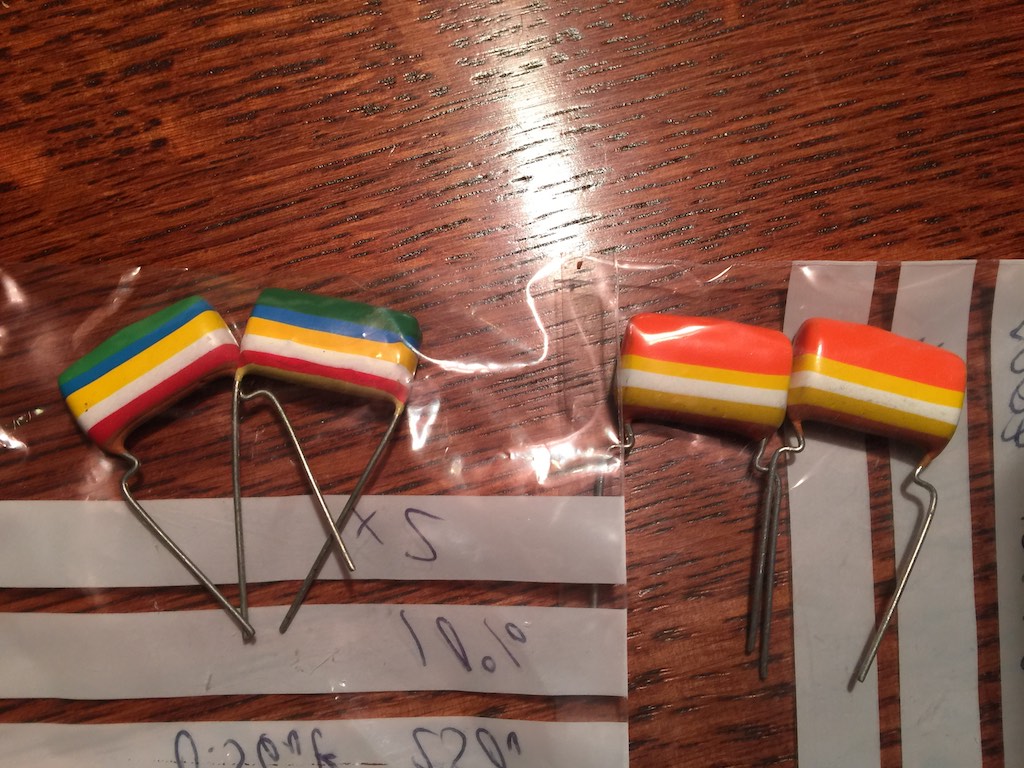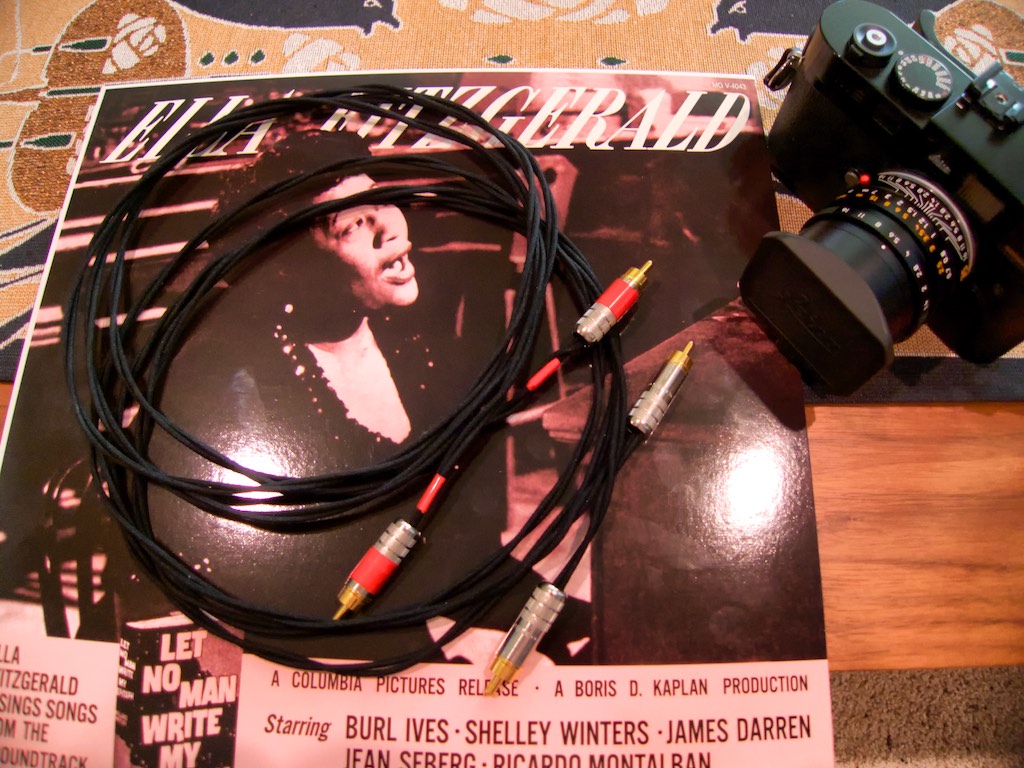Last week was a rough week, so it was especially sweet to relax on Saturday, and work through some listening tests with the A5 Voice of the Theatre Project, Western Electric WE16GA wire, Belden 8402 microphone cable interconnects, Duelund DCA16GA wire, Jupiter Condenser Red Astron capacitors, and the Woody SPU tonearm.
The Pete Riggle Audio Engineering Woody SPU Tonearm: I'll start with a few words on the Woody SPU tonearm by Pete Riggle Audio Engineering. I've had Pete's Woody SPU tonearm on my Garrard Project turntable for a very long time, over a year.
I'd actually lost track of how long, and I appreciate Pete being so gracious about how long it's taken me to write an article about it.
It's been a rough year for me to get feature-length reviews written due to competing demands on my time, but I've got a good start on the review I'm writing for Positive Feedback about the Woody SPU tonearm.
Last week I had been listening to my vintage Altec A5 Voice of the Theatre loudspeakers & vintage McIntosh (MX110Z pre & MC30 amps) system with my Schick tonearms, that I'm using as a comparators for the Woody SPU.
Yesterday, Saturday, I swapped back in the Woody SPU tonearm for some comparative listening, and mounted back up my stereo Ortofon SPU Classic GM MkII phono cartridge that I've been enjoying so much.
The experience with the Altec A5 VOTT's in the system was much the same as when Rafe & Don visited Jeff's Place to hear my Westminster Royal SE's, when the transformation brought about by the Woody SPU tonearm being put into the system was so dramatic that we were all rather shocked.
You'd think I'd be immune to this sort of surprise by now, but yesterday when I put the Woody SPU tonearm back into the system while listening to my Altec A5's, the transformation was so dramatic that I was completely caught off guard. If anything, the transformation was even more dramatic than when we'd been listening to my Westminster Royal SE's during Rafe & Don's visit.
The smackdown on my Schick was so severe it was really rather unsettling for me. It's pretty clear that Pete's Woody SPU tonearm with the Ortofon SPU Classic GM MkII phono cartridge is dramatically better than the Schick, and the Schick is pretty darn good!
To date, both Ron & Leo have purchased Woody SPU tonearms (and Ortofon SPU phono cartridges) for use in their own systems, and I just became the third person among the Jeff's Place regulars to buy a Woody SPU tonearm, which will be permanently replacing my Schick tonearm for stereo cartridge use (I'm keeping one Schick for mono cartridge use).
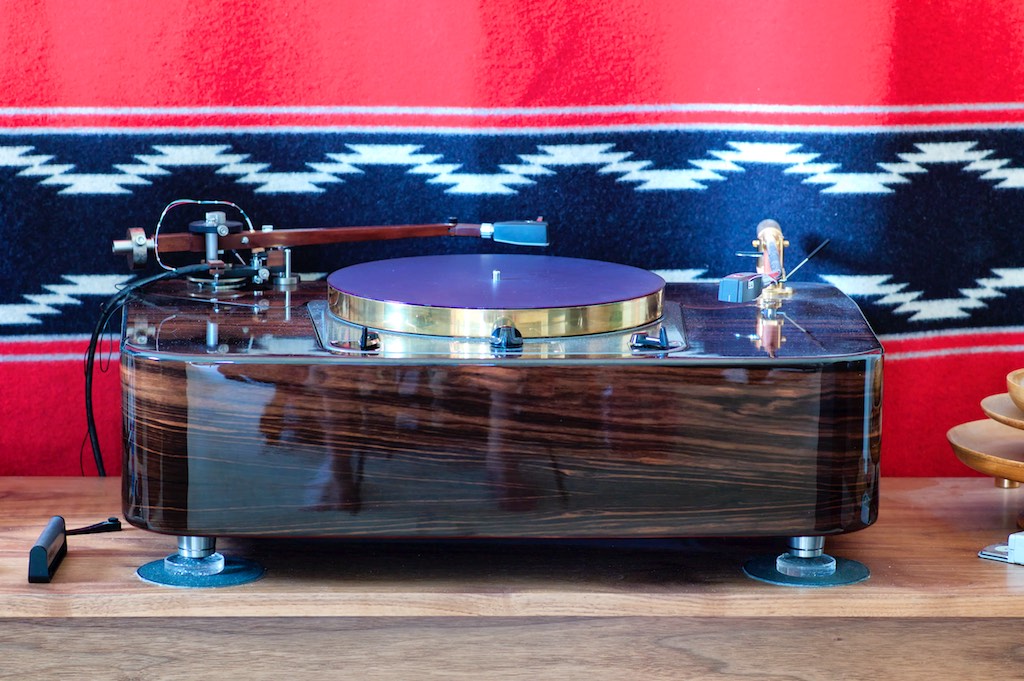
Left is the Woody SPU tonearm, right is the Schick tonearm, mounted to the Garrard Project turntable.
I realized yesterday that the performance improvement brought by the Woody SPU tonearm to my system was so dramatic that I'd be foolish to let it go anywhere, so I bought it, to make sure it'd stay put.
I'll be working on my review of the Woody SPU tonearm over the coming weeks, so there will be much more to read on this topic in the near future.
The Altec A5 Voice of the Theatre Crossovers: I'm making progress on the Altec A5 Voice of the Theatre crossovers, and I think I'm getting pretty close to calling it good, with the exception of a couple more experiments.
The C3 position in the Hiraga-style crossover: First of all, I've decided I like the C3 combination of an Arizona Capacitor 0.47 uF Blue Cactus (Mylar/paper/oil/aluminum foil capacitor), a Jupiter Condenser 0.33 uF Red Astron (Mylar/polyester film/tin foil/potted phenolic paper capacitor), and a 0.022 uF Spec Ruby Mica capacitor, much better than the C3 combo of Arizona Capacitor 0.47 uF Blue Cactus, Arizona Capacitor 0.33 uF Green Cactus, and a 0.022 uF Spec Ruby Mica.
The tonal balance of this combination added in the additional richness and smoothness that I was looking for from my 1005B 10-cell horns & 288C Alnico high-frequency compression drivers.
If I had the Arizona Capacitors Red Cactus capacitors (paper/aluminum foil/oil) in 0.47uF I'd probably try those just to be thorough, because they sounded so good as bypass caps on C2, but the combination of Blue Cactus, Red Astron, and Spec Ruby Mica Capacitor is so bloody good in C3 I should probably leave well enough alone.
The Jupiter Condenser Red "Astron" style of capacitor, with its warm and "uniquely vintage tone", is mostly targeted at guitar guys for their guitars & guitar amps, and it hasn't really come to the attention of the audio community yet.
I'm also using a pair of 0.22uF Red Astron's in my MX110Z preamplifier-tuner in the C93 & C95 and C94 & C96 positions. The Red Astron's are the only capacitors that I've used in my MX110Z that I haven't immediately wanted to remove, except for the unavailable vintage Sprague Bumblebees, that is. The Bumblebees are wonderfully lush, warm, and romantic, but they might not be as extended on the top as some would want.
Recording engineer Steve Hoffman has told me that he's never heard a modification to an MX110Z that improved it, and I would tend to agree (Steve's a big fan of the MX110Z too), as all my efforts to modify my MX110Z were unsuccessful, except for replacing the C93 & C95 and C94 & C96 caps.
Originally my MX110Z had Mullard 'Tropical Fish' tone caps in it, but one of them fell apart when taking them out for experimentation, so I couldn't put them back in to try again for comparisons. The 'Tropical Fish' sounded really good in my MX110Z, and I actually bought some more to try in it (above), but haven't got back around to it yet.
The vintage Sprague Bumblebee caps are fantastically musical, and you see a bunch of them in vintage McIntosh (and other tube amplifiers), and they are at least part of the reason those vintage electronics sound so good. How I wish someone would make an exact replica of the Sprague Bumblebees. If they did I think they'd fly off the shelves!
The Red Astron's actually sound quite a bit like the Bumblebees in that they have that warm & lush vintage tone, except that the Red Astron's are more extended on top than the Bumblebees, which I think some might prefer.
I liked the tin foil Red Astron's well enough that I left them in my MX110Z, and I'm really impressed with them in my 'composite' C3 of the A5 crossover.
The R3 'Notch Filter' position in the Hiraga-style crossover: Ok, I got a little excited talking about Red Astron's, so back to the next step of experimentation with the A5 crossover, which is the R3 notch filter part of the high-frequency circuit, which Yazaki-san had proposed we modify to allow for some adjustibility, which is a good idea.
If you look at the diagram above you'll see that the 24 Ohm R3 was replaced with the combination of a 10 Ohm Brown Devil resistor (R3-1), a 10 Ohm Clarostat variable resistor, and a second 10 Ohm Brown Devil resistor (R3-2).
I substituted a 15 Ohm Brown Devil resistor for the R3-2 and that has worked nicely, and at the moment I have the R-3 composite resistor adjusted to 35 Ohms, which is up quite a bit from the specified 24 Ohms. I'm not sure what effect that really has on the notch filter in the high-frequency crossover circuit, but Pete Riggle has volunteered to model the two values using SPICE to see what effect it has.
Pete recommended I also try a couple of 16 Ohm L-pads in the high-frequency circuit, and see how shelving down the high-frequencies works compared to changing the notch depth with more resistance in R3. I ordered up a couple of 16 Ohm L-pads to see how the two different approaches would influence overall performance. I'll report back after I've tried the L-pads.
Duelund DCA16GA interconnects vs. the Belden 8402 microphone cable interconnects: As I reported in previous posts, I made up 1-meter & 2-meter pairs of interconnects using Duelund DCA16GA tinned-copper tone wire. When I had tried making interconnects with the Western Electric WE16GA wire the experiment was a flop, and I didn't care for the sound. Given how similar the Duelund DCA16GA is to the Western Electric WE16GA, I wondered if I was going to have a similar outcome ...
***
Update Tuesday September 20th: Just when you think it's safe something happens that upsets the cart. In this case it was my cherished MacBook Air that I use to write Jeff's Place. I was up at my usual 4 a.m. catching up on emails and blog comments. I had my MacBook Air on my lap desk, and I was working through my correspondence.
I had fixed a nice pot of coffee on was on cup # 2 when after taking a sip, while sitting it down on the side table, I bumped it against the side table, sending a big splash of coffee out of the cup directly on the Air's keyboard! My beloved MacBook Air sputtered and died. Argh!
I had actually been thinking about getting a new Mac notebook, but I wasn't thinking that would be the reason. Fortunately everything except my photos in Aperture were backed up to iCloud, so all the writing I did on the Woody SPU article for Positive Feedback was safe. I did all the usual rescue tips for my wet Air, but to no avail.
While I figure out how to heal my Air, I got online yesterday and ordered up a new MacBook Pro. Apple overnighted it to me, I got it set up, and I'm back up and running. That was one expensive cup of coffee!
Duelund DCA16GA tinned-copper wire as RCA interconnects: Ok, now back to audio. Pete Riggle stopped by to talk to me about the Woody SPU tonearm review I'm working on, and while he was here I pressed him into service to listen to comparisons of the C3 composite capacitors in the A5's crossovers. Pete liked the Red Astron combo the best too.
I also had Pete listen for the musical & sonic differences between the 2-meter Duelund DCA16GA RCA interconnects I had made up for the MX110Z to MC30s positions, and the Belden 8402 microphone cable RCA interconnects.
We started with the Duelund, listened to a number of albums, then switched to the Belden, then back to the Duelund for a final listen. The Duelund DCA16GA makes for a fine sounding pair of interconnects that is rich, very dynamic, colorful, and fun to listen to music with, that makes music sound vibrant and exciting in the most endearing way.
I took the Duelund out and put in my pair of 2-meter Belden 8402 microphone cable RCA interconnects for comparison, which I've got over a year's worth of running time on now, and Pete was immediately taken by their sound with the Altec A5 Voice of the Theatre loudspeakers. Pete is also using the Belden 8402 in one of his systems with excellent results, and described to me how it had positively transformed the performance of his Beveridge loudspeakers.
The Belden 8402 microphone cable interconnects do sound great after they're broken in adequately, being musical, expressive, colorful, smooth, and rich, and as such they are my 'go-to' interconnect theses days, with the bonus being they're extremely affordable.
Then I took out the Belden's and put back in the Duelund's and Pete and I listened some more. Pete was very impressed on second listen to the Duelund DCA16GA interconnects, telling me he thought they were much more dynamic than the Belden's, more colorful, and more transparent. I think Pete's right on, that's pretty much what I was hearing to from the Duelund's.
The weakness with the Duelund DCA16GA as interconnects is they're unshielded, so that can be an issue for certain applications (like with my SUT). I am hoping to investigate a pair of 'shielded' Duelund DCA16GA as time allows, and it will be interesting then to hear how they compare to the Belden's.
I ran out of time to write this evening, so check back tomorrow for the rest of this blog post.
More to come!
Thanks for stopping by!






